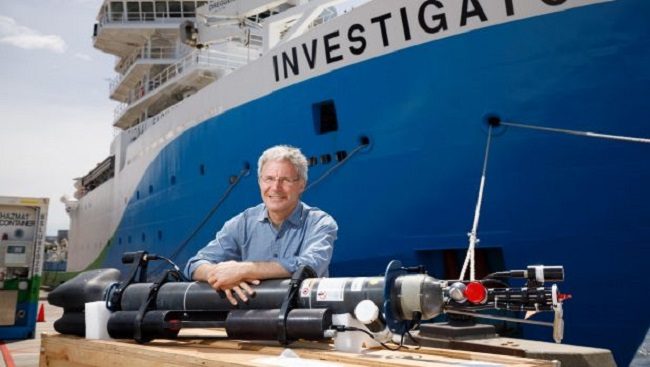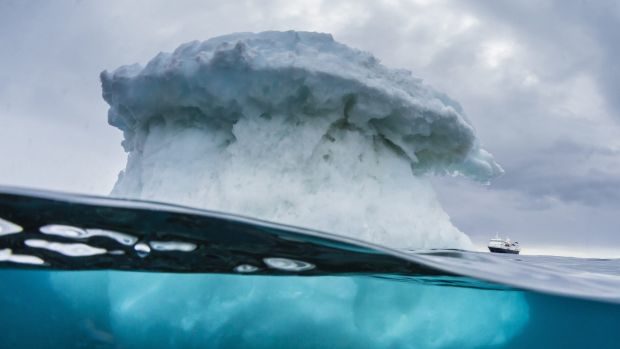
Teams of scientists on the RV Investigator have been profiling the salinity and temperature of water between Tasmania and Antarctica at 108 locations.
They also released the first batch of deep Argot floats to measure conditions as deep as 4000 metres.
But it is the early analysis of data on salinity in the so-called bottom waters near the seabed that may stir international debate.
"Every time we've measured since the 1970s, [bottom water's] been becoming lighter and fresher," Steve Rintoul, the voyage chief scientist, told Fairfax Media on Monday as the ship took its final ocean profile.
"We've got the first hint now that maybe things are shifting back to becoming saltier and denser in the deepest part of the ocean," said Dr Rintoul, who is a senior researcher at CSIRO and the Antarctic Climate and Ecosystems (ACE) CRC.
Dr Rintoul said "this increase in salinity still brings levels to nowhere near where they were in the 1970s ... nor even into the 1990s". The trend of warming of those waters has not changed.
Still the salinity puzzle will be an important one to resolve, particularly if confirmed by the 11 deep floats that are starting to send back their once-a-month readings.
These deep-water devices, being used for the first time in operational work, will transmit data for as long as seven years each time they surface.
Understanding the Southern Ocean is important not only to improving weather forecasts for Australia.
The region surrounding Antarctica is also a "modulator of the global climate", said Cai Wenju, director of CSIRO's new Centre for Southern Hemisphere Oceans Research that is also a partner of the Investigator's research.
While oceans globally take up about 93 per cent of the extra heat trapped in the atmosphere by greenhouse gases, they also absorb about a third of the extra carbon-dioxide released by human activities, such as burning coal.
Of those totals, the Southern Ocean accounts for as much as 75 per cent of the ocean heat sink and 40 per cent of the CO2 dissolved in the seas, Dr Rintoul said.
"Changes in the [deep ocean] circulation would alter the efficiency that the Southern Ocean takes up heat and carbon, and have a big impact on climate," he said.
Dr Rintoul said the salinity changes detected may be a response following the breaking off of half the Merz Glacier Tongue in 2010 in eastern Antarctica.
"The big step in [bottom water] freshening that happened in 2010 after the calving of the Merz Glacier may now be recovering after the sea ice distribution changed again," he said.
The drop in sea ice coverage from a record large extent about four years ago to record - or near record - low coverage this year may also be a factor, he said.
According to Jan Lieser, a sea ice expert at the ACE CRC, sea ice levels as of February 17 were the lowest in accurate satellite records going back to 1981 for this date, at about 2.17 million square kilometres.
The melting season is nearing its end, and it remains to be seen whether coverage will drop below the record minimum set last March, Dr Lieser said.
The RV Investigators' researchers also collected samples of key ocean nutrients, such as iron.
They also monitored cloud formation with a special NASA plane making regular flights overhead when conditions were ideal.
The interaction between clouds and aerosols, and their role in future global warming, is one of the largest uncertainties in climate models, CSIRO said.
Air over the Southern Ocean is relatively pristine compared with other regions of the world, with the source of aerosols mainly organic material produced by tiny phytoplankton, Dr Rintoul said.
The scientists had collected "a fantastic data set" of aerosols using a combination of instruments based on the vessel, in the aircraft and from satellites, he said.




Really, if people are not able to use their brains, get other ones that can.
THE CO2 STORY IS NOT TRUE, WAKE UP!